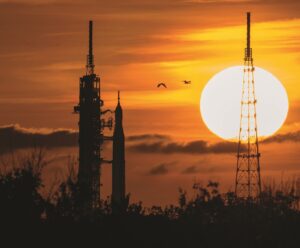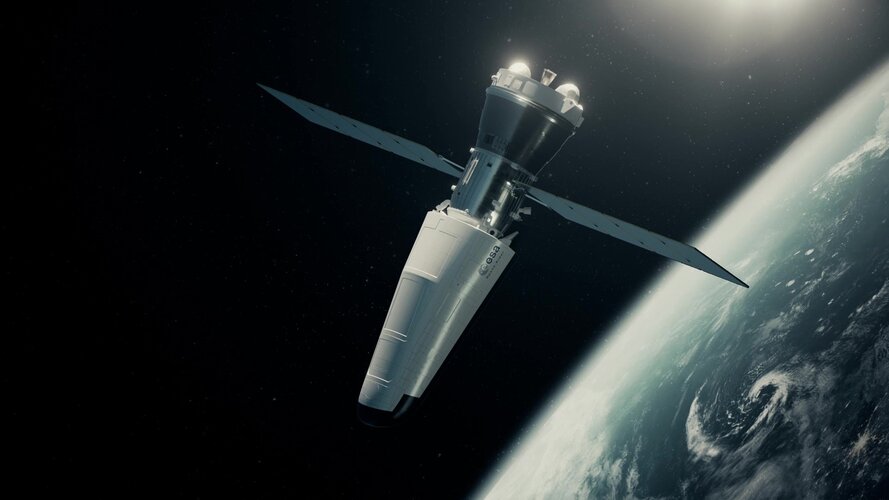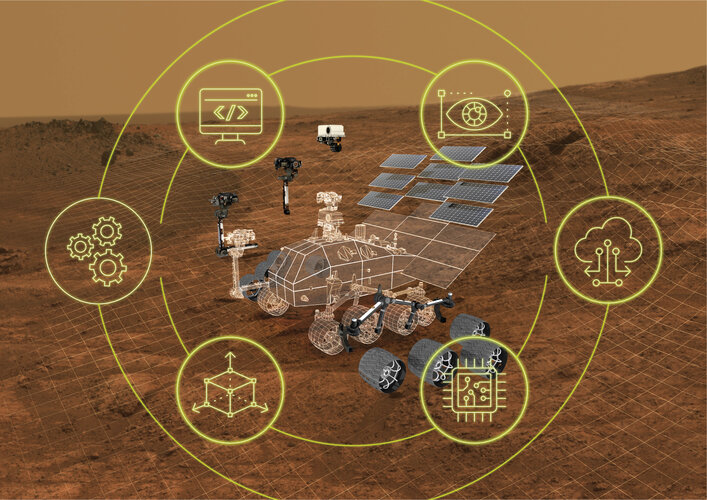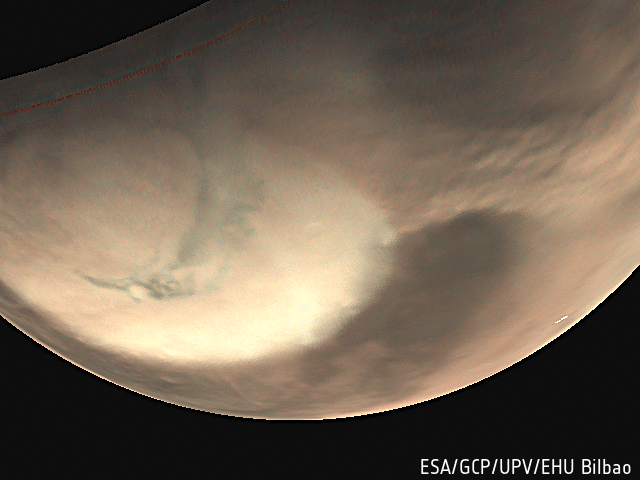Op-ed | SpaceX fans should stand behind NASA and support Artemis
Tuesday, 15 November 2022 12:42
This time we want to go to the moon and stay, sustainably and permanently. And then Mars. Apollo was a false start, but Artemis could be the real start.
The post Op-ed | SpaceX fans should stand behind NASA and support Artemis appeared first on SpaceNews.
To orbit and back with Space Rider
Tuesday, 15 November 2022 12:30
Europe’s bid to deliver a return-to-Earth service for in-orbit transportation and research projects is rapidly taking shape, with teams working on the Space Rider spacecraft gearing up for a series of drop tests in 2023. Drop tests with small-scale models will be followed by a full-scale test in anticipation of inaugural flight towards the end of 2024.
ESA Technology Strategy for Europe’s future in space
Tuesday, 15 November 2022 12:20
ESA Director General Josef Aschbacher’s Agenda 2025 has set the future course of Europe in space, building on the Agency’s Technology Strategy which details how our continent is developing the essential technology to get it where it is going. Reflecting four years of progress since it was first unveiled and the new guidance from Agenda 2025, ESA has now updated the Technology Strategy accordingly. It has been released in time for the Agency’s Council at Ministerial Level in Paris on 22 – 23 November, demonstrating the fundamental role of technology across all ESA missions and programmes.
Martian dust storms churn up Earth-like clouds
Tuesday, 15 November 2022 12:00
ESA’s Mars Express has revealed that Mars churns up surprisingly Earth-like cloud patterns that are reminiscent of those in our planet’s tropical regions.
South Korea’s Danuri orbiter demonstrates ‘space internet’ en route to moon
Tuesday, 15 November 2022 11:14
South Korea’s robotic lunar orbiter Danuri successfully demonstrated “space internet” on its way to the moon by sending video and photo files, including a popular Korean band’s music video, at a distance of more than 1.2 million kilometers to Earth.
AFRL awards contract for pioneering spacecraft in region of Moon
Tuesday, 15 November 2022 10:22 The Air Force Research Laboratory has awarded a $72 million contract to Advanced Space LLC to demonstrate space situational awareness, object detection and tracking in the region of the Moon, supporting a resurgence of interest in lunar exploration and development across civil, commercial and international space agencies.
AFRL's Space Vehicles Directorate awarded the contract to support th
The Air Force Research Laboratory has awarded a $72 million contract to Advanced Space LLC to demonstrate space situational awareness, object detection and tracking in the region of the Moon, supporting a resurgence of interest in lunar exploration and development across civil, commercial and international space agencies.
AFRL's Space Vehicles Directorate awarded the contract to support th Phantom Space conducts successful stage hot fire test for new rocket
Tuesday, 15 November 2022 10:22 Phantom Space Corporation (Phantom), a space applications company providing launch services and satellite manufacturing to business and government clients, has announced a successful stage hot fire test at Spaceport America in New Mexico.
Phantom's pathfinder test stage, equipped with a single Hadley engine supplied by Ursa Major, completed a 60 second hot fire test to validate first and s
Phantom Space Corporation (Phantom), a space applications company providing launch services and satellite manufacturing to business and government clients, has announced a successful stage hot fire test at Spaceport America in New Mexico.
Phantom's pathfinder test stage, equipped with a single Hadley engine supplied by Ursa Major, completed a 60 second hot fire test to validate first and s NASA returning to the Moon with mega rocket launch
Tuesday, 15 November 2022 10:22 Third time's the charm?
After two failed attempts, NASA plans to launch its new mega Moon rocket early Wednesday from Florida, less than a week after the massive machine withstood a hurricane.
"Our time is coming. And we hope that that is on Wednesday," said Mike Sarafin, the manager of the much-delayed Artemis 1 mission, at NASA headquarters.
The Artemis 1 mission, a test flight wit
Third time's the charm?
After two failed attempts, NASA plans to launch its new mega Moon rocket early Wednesday from Florida, less than a week after the massive machine withstood a hurricane.
"Our time is coming. And we hope that that is on Wednesday," said Mike Sarafin, the manager of the much-delayed Artemis 1 mission, at NASA headquarters.
The Artemis 1 mission, a test flight wit Advanced Space leads Lunar pathfinder efforts for NASA
Tuesday, 15 November 2022 10:22 Advanced Space LLC., a leading space tech solutions company, announced CAPSTONE successfully completed the initial insertion maneuver into a Near Rectilinear Halo Orbit (NRHO) on Sunday, November 13th. Two smaller correction maneuvers will take place this week to ensure the spacecraft is confirmed into the complex lunar orbit.
This NRHO is an orbit around the Moon that has never been flown
Advanced Space LLC., a leading space tech solutions company, announced CAPSTONE successfully completed the initial insertion maneuver into a Near Rectilinear Halo Orbit (NRHO) on Sunday, November 13th. Two smaller correction maneuvers will take place this week to ensure the spacecraft is confirmed into the complex lunar orbit.
This NRHO is an orbit around the Moon that has never been flown Beyond Gravity passes CDR for critical mechanism for NASA's Gateway
Tuesday, 15 November 2022 10:22 The Gateway space station, an essential element of NASA's Artemis program, will serve as humanity's first space station in lunar orbit supporting crewed and uncrewed missions to the surface of the Moon and future deep space exploration missions.
NASA contracted Maxar, a provider of comprehensive space solutions and secure, precise, geospatial intelligence, to manufacture the PPE, which wil
The Gateway space station, an essential element of NASA's Artemis program, will serve as humanity's first space station in lunar orbit supporting crewed and uncrewed missions to the surface of the Moon and future deep space exploration missions.
NASA contracted Maxar, a provider of comprehensive space solutions and secure, precise, geospatial intelligence, to manufacture the PPE, which wil NASA's CAPSTONE probe overcomes malfunction, reaches orbit around the moon
Tuesday, 15 November 2022 10:22 NASA's CAPSTONE CubeSat probe arrived in orbit around the moon Sunday night in a major win for the space agency following a major engine malfunction over the summer that nearly derailed the mission.
CAPSTONE had to fire its engines twice more to get back to the moon, where it entered a highly elliptical near rectilinear halo orbit or NRHO about 7:39 p.m., NASA said.
The U.S. spac
NASA's CAPSTONE CubeSat probe arrived in orbit around the moon Sunday night in a major win for the space agency following a major engine malfunction over the summer that nearly derailed the mission.
CAPSTONE had to fire its engines twice more to get back to the moon, where it entered a highly elliptical near rectilinear halo orbit or NRHO about 7:39 p.m., NASA said.
The U.S. spac ASU microsat will be launched as part of NASA'S Artemis 1 mission
Tuesday, 15 November 2022 10:22 A satellite designed by ASU researchers to detect evidence of water-ice on the moon will begin its journey through space on NASA's Artemis 1 mission, scheduled to launch later this month.
NASA's Lunar Polar Hydrogen Mapper, or LunaH-Map, was designed by ASU researchers and is the first ASU-led NASA mission. The small satellite, about the size of a shoebox, will orbit the moon to collect da
A satellite designed by ASU researchers to detect evidence of water-ice on the moon will begin its journey through space on NASA's Artemis 1 mission, scheduled to launch later this month.
NASA's Lunar Polar Hydrogen Mapper, or LunaH-Map, was designed by ASU researchers and is the first ASU-led NASA mission. The small satellite, about the size of a shoebox, will orbit the moon to collect da Why go back to the Moon
Tuesday, 15 November 2022 10:22 On September 12, 1962, then US president John F. Kennedy informed the public of his plan to put a man on the Moon by the end of the decade.
It was the height of the Cold War and America needed a big victory to demonstrate its space superiority after the Soviet Union had launched the first satellite and put the first man in orbit.
"We choose to go to the Moon," Kennedy told 40,000 people
On September 12, 1962, then US president John F. Kennedy informed the public of his plan to put a man on the Moon by the end of the decade.
It was the height of the Cold War and America needed a big victory to demonstrate its space superiority after the Soviet Union had launched the first satellite and put the first man in orbit.
"We choose to go to the Moon," Kennedy told 40,000 people The road to the Moon
Tuesday, 15 November 2022 10:22 The birth of a spacecraft takes many years from design through to assembly, testing and launch. Here we speak to Airbus engineer Paolo Artusio about how the ESM-1, the European Service Module which will propel the Orion spacecraft to the Moon, took shape.
For Artusio, the moment a programme transitions to its assembly, integration and test (AIT) phase is: "When engineers' dreams leave thei
The birth of a spacecraft takes many years from design through to assembly, testing and launch. Here we speak to Airbus engineer Paolo Artusio about how the ESM-1, the European Service Module which will propel the Orion spacecraft to the Moon, took shape.
For Artusio, the moment a programme transitions to its assembly, integration and test (AIT) phase is: "When engineers' dreams leave thei SFL contracted for 15 additional HawkEye 360 RF geolocation microsatellites
Tuesday, 15 November 2022 10:22 Space Flight Laboratory (SFL) has been contracted to support development of Clusters 7 through 11 in the HawkEye 360 radio frequency (RF) geolocation microsatellite constellation. Under the Flex Production program, SFL is designing, assembling, and integrating Cluster 9 at its Toronto headquarters and is providing technical support for the integration of Clusters 7, 8, 10 and 11 at HawkEye 360's
Space Flight Laboratory (SFL) has been contracted to support development of Clusters 7 through 11 in the HawkEye 360 radio frequency (RF) geolocation microsatellite constellation. Under the Flex Production program, SFL is designing, assembling, and integrating Cluster 9 at its Toronto headquarters and is providing technical support for the integration of Clusters 7, 8, 10 and 11 at HawkEye 360's 
